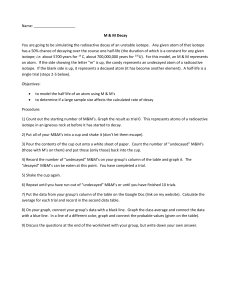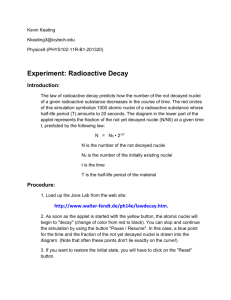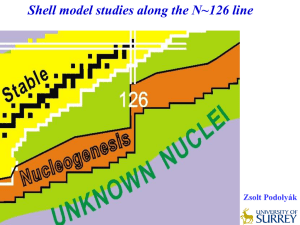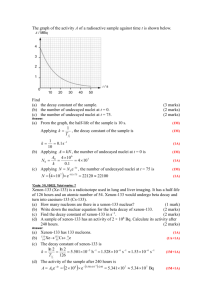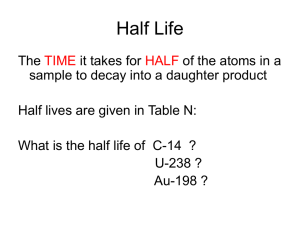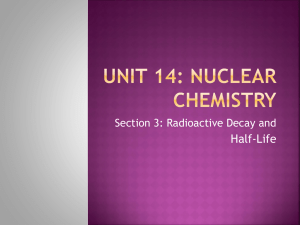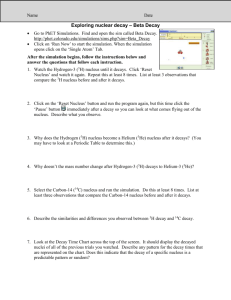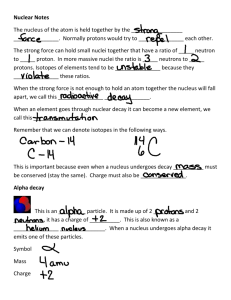NoteGuide-07-01HalfLifeAndDecayRates
advertisement
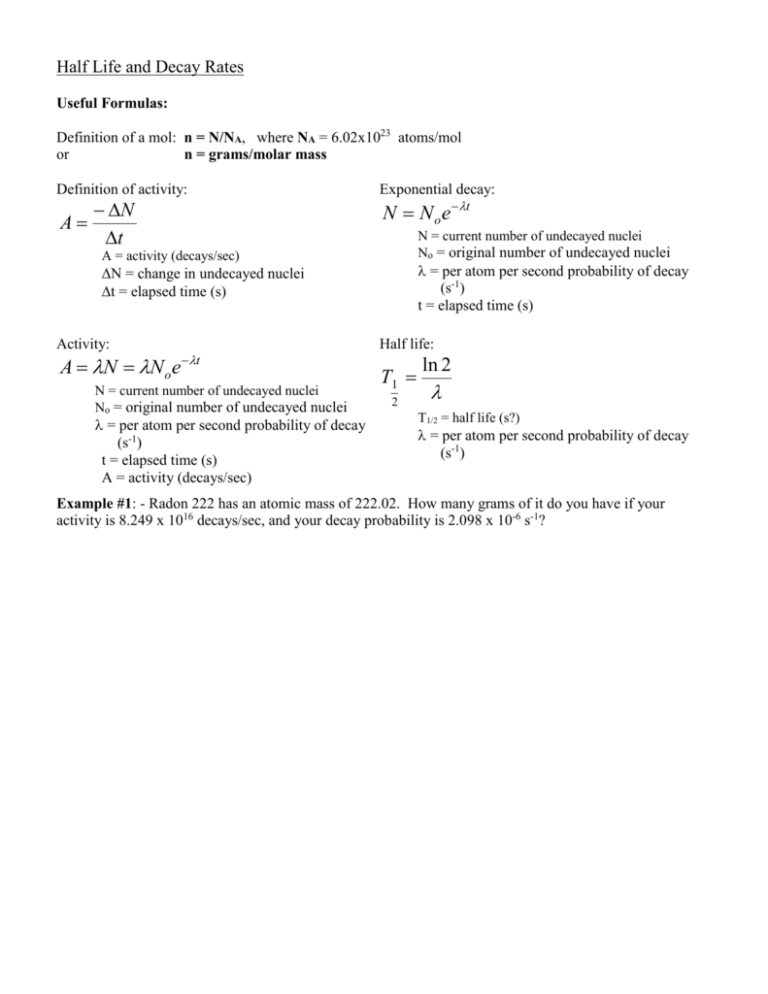
Half Life and Decay Rates Useful Formulas: Definition of a mol: n = N/NA, where NA = 6.02x1023 atoms/mol or n = grams/molar mass Definition of activity: N A t Exponential decay: N N o e t N = current number of undecayed nuclei No = original number of undecayed nuclei A = activity (decays/sec) = per atom per second probability of decay (s-1) t = elapsed time (s) N = change in undecayed nuclei t = elapsed time (s) Activity: A N N o e t N = current number of undecayed nuclei No = original number of undecayed nuclei = per atom per second probability of decay (s-1) t = elapsed time (s) A = activity (decays/sec) Half life: T1 2 ln 2 T1/2 = half life (s?) = per atom per second probability of decay (s-1) Example #1: - Radon 222 has an atomic mass of 222.02. How many grams of it do you have if your activity is 8.249 x 1016 decays/sec, and your decay probability is 2.098 x 10-6 s-1? N vs t (Draw the half life lines in and then straight down at 50, 25, 12.5 on the vertical axis) Remaining nuclei 100 90 80 70 60 50 40 30 20 10 0 0 20 40 60 80 100 Time T1 2 ln 2 N N o e t A N N o e t Example #2: Bi 211 has a half life of 128.4 s. What is the per-second probability of a nuclei decaying? If you start out with 32 grams of Bi 211, how much is left after 385.2 s? After what time is there 23 grams left? What is the activity when there is 23 grams left? (m = 210.987 u)

